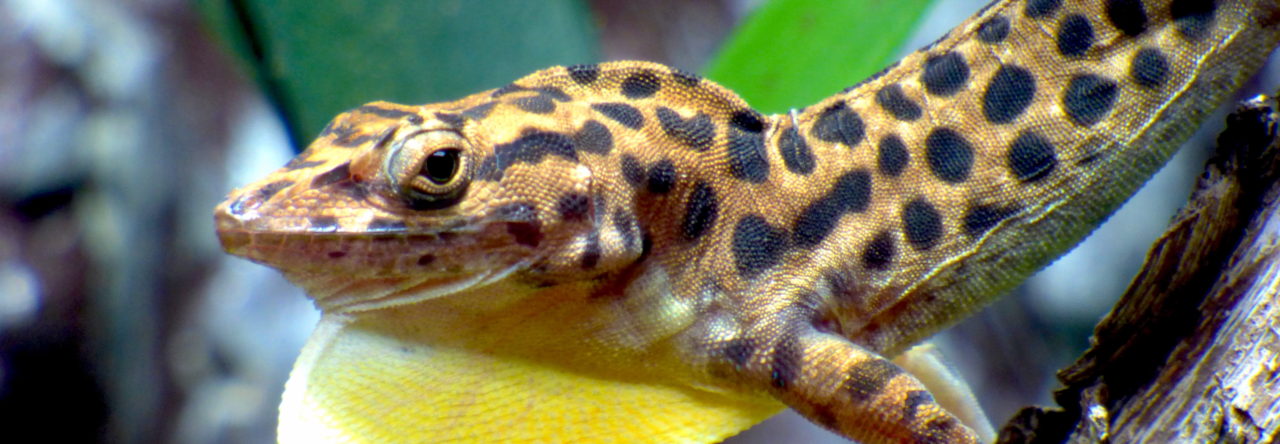
Image of an anole with a regenerated tail. The point of breakage (and regeneration) is shown with an arrow. Image from Wired.com
It’s happened to us all: you try so hard not to break the tail when you catch an anole, but inevitably it happens to one. As readers of Anole Annals know, many species of lizards, including anoles, lose their tails as a defense mechanism. While losing a tail, called autotomy, has known detrimental effects on social status in males and reduced locomotor capacity, we know less about other potential costs for a strategy that is intended to keeps lizards alive to reproduce another day. McKenzie Quinn, an undergraduate in Michele Johnson’s lab at Trinity University, wanted to know how losing so much tissue, and then replacing it, might take away available resources from other important processes. She measured changes in egg number, egg size, body size, and fat mass in the liver over the course of three weeks after experimental removal of the tail in green anoles. These females were compared to a control group that did not have their tails removed.
Lizards who had their tails autotomized re-grew their tails over the course of the experiment, whereas control groups that had intact tails had minimal tail growth. Surprisingly, there was no difference between the two groups in any of the traits measured. Females with autotomized tails had just as much growth, just as many eggs of the same size, and just as much fat accumulated in the liver. This suggests that in a laboratory setting females are not taking resources away from growth and reproduction to re-grow a tail. Field studies and additional manipulations of resource availability in the future may help us understand what costs are associated with such an intriguing and seemingly costly defense strategy.
- Exercise and the Immune System in Green Anoles - January 6, 2021
- Exercise Can Kill You (If You’re an Anole)! - May 10, 2019
- Leptin Mediates Tradeoffs in Green Anoles - February 2, 2019


Sixto J. Inchaustegui
Interesting work. I don’t know if you had the opportunity to review the PhD Thesis/ Tulane University, by Cheng, Hsien Yu, 1984. Resource allocation tacics: repair versus reproduction in sphaerodactylus geckos Sauria, Gekkonidae). The research was based in tail regeneraton and allocation of resources in two Hispaniolan Sphaerodactylus.
mjohnson216
Thanks, Sixto! We’ll definitely check it out.
Gerrut Norval
In a study we did (submitted, but not published yet), we found no statistically significant variations in the monthly mean abdominal fat-body weight indexes or monthly mean liver weight indexes of brown anoles (both sexes) that had not experienced caudal autotomy and those that had. We hypothesize that the results of this study is the result of an increase in foraging in A. sagrei specimens that experienced tail autotomy.